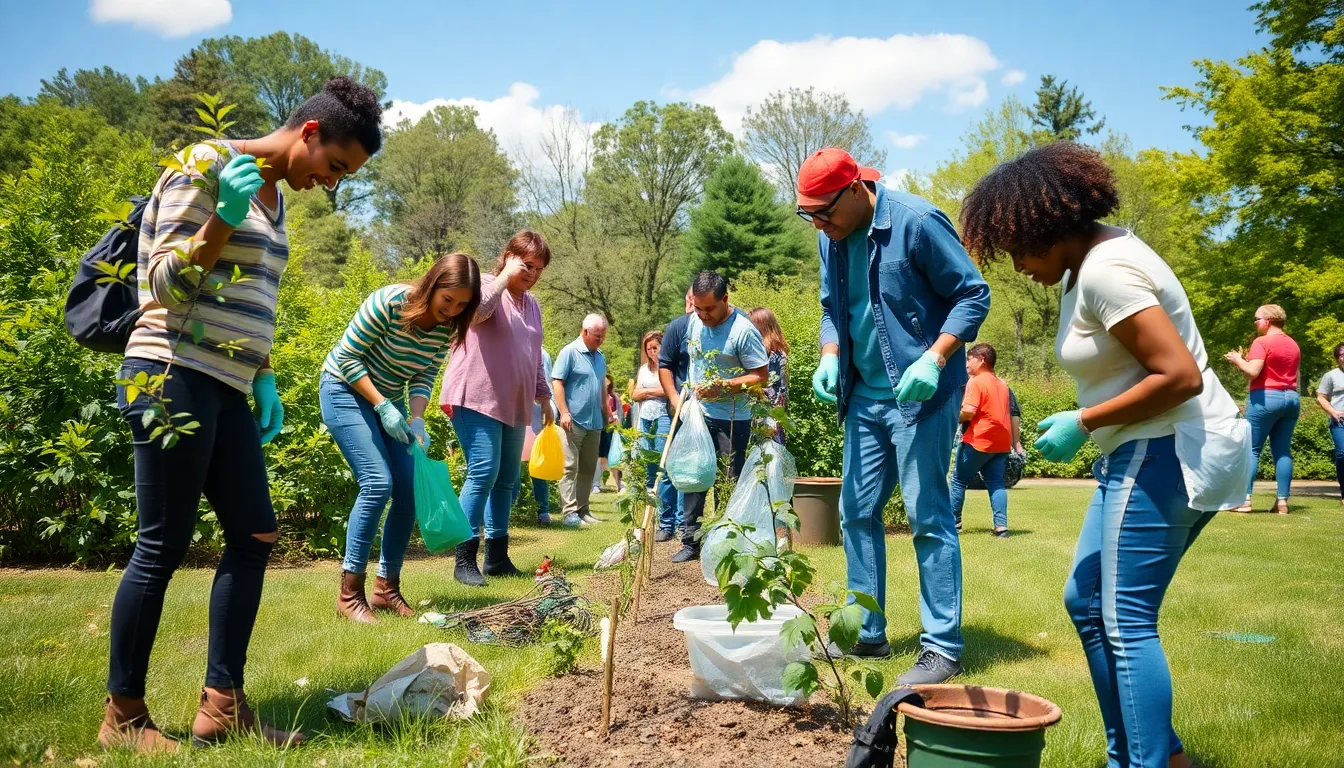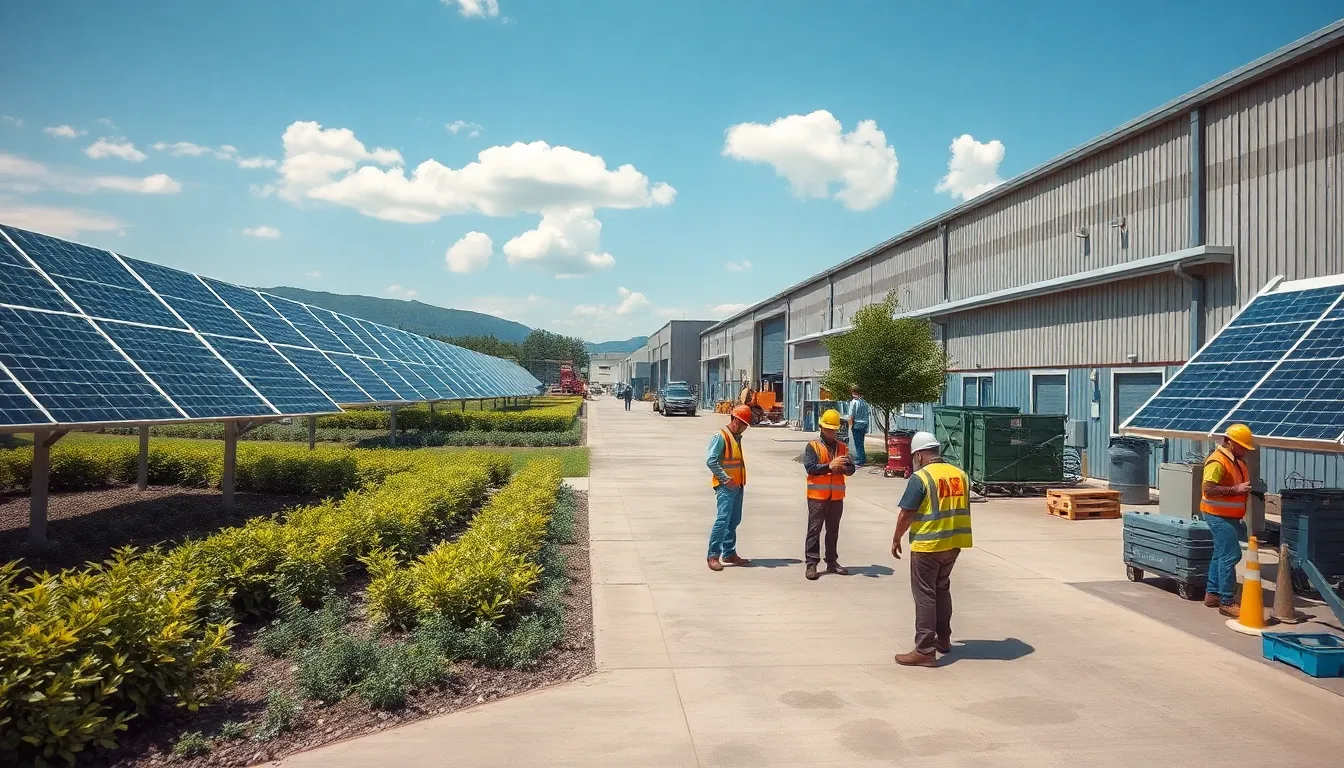Table of Contents
ToggleIn a world where plastic straws are the new villain and climate change feels like a looming horror movie, environmental protection has never been more crucial. Every day, people are waking up to the reality that our planet needs a superhero—preferably one that doesn’t wear tights but instead rocks a reusable grocery bag.
From the air we breathe to the water we drink, every little action counts. It’s time to swap those single-use items for sustainable alternatives and embrace eco-friendly habits. After all, saving the Earth isn’t just a trend; it’s a necessity. So grab your compost bin and join the fight—because Mother Nature deserves a little TLC, and who wouldn’t want to be part of the coolest club around: the Earth Warriors?
Understanding Environmental Protection
Environmental protection encompasses actions aimed at conserving the natural world. The growing threats of climate change and pollution underscore its significance.
Definition and Importance
Environmental protection refers to the practices that safeguard ecosystems and promote sustainability. This protection becomes vital as human activities contribute to biodiversity loss and environmental degradation. By recognizing the interconnectedness of species and habitats, individuals and communities can foster healthy ecosystems. Protecting the environment supports public health, mitigates climate change impacts, and preserves natural resources for future generations.
Key Principles of Environmental Protection
Fundamental principles guide environmental protection efforts. First, conservation emphasizes the responsible use of resources to ensure their availability. Next, sustainability involves meeting present needs without compromising future generations. Additionally, pollution prevention focuses on minimizing waste and harmful substances entering ecosystems. Education plays a crucial role, raising awareness and promoting environmentally friendly practices. Collaborative initiatives among governments, businesses, and communities strengthen these principles, creating a united front for environmental stewardship.
Major Environmental Issues

Various significant environmental issues threaten the planet and require immediate attention.
Climate Change
Climate change refers to long-term shifts in temperatures and weather patterns. Human activities like burning fossil fuels increase greenhouse gas emissions, contributing to global warming. Rising sea levels, extreme weather events, and altered ecosystems result from these changes. According to NASA, global temperatures have increased by approximately 1.2 degrees Celsius since the late 19th century. Mitigating climate change involves reducing emissions, transitioning to renewable energy, and promoting sustainable practices globally.
Pollution
Pollution encompasses various contaminants that harm air, water, and soil quality. Industrial processes, vehicle emissions, and waste disposal contribute significantly to pollution levels. In 2020, the World Health Organization estimated that outdoor air pollution caused 4.2 million premature deaths worldwide. Strategies to combat pollution include stricter regulations, waste management initiatives, and promoting cleaner technologies. Individuals can also contribute by reducing plastic use and opting for green products.
Deforestation
Deforestation involves the large-scale removal of forests for agriculture, urban development, and logging. This practice leads to habitat loss, biodiversity decline, and climate change exacerbation. Approximately 10 million hectares of forest are lost each year, according to the Food and Agriculture Organization. Sustainable forest management and reforestation efforts play critical roles in addressing this issue. Supporting initiatives that promote responsible land use can help protect vital ecosystems.
Strategies for Environmental Protection
Effective strategies for environmental protection can significantly mitigate climate change and pollution. These strategies involve a multifaceted approach encompassing renewable energy, conservation, and sustainable development.
Renewable Energy Solutions
Renewable energy solutions provide cleaner alternatives to fossil fuels. Solar energy harnesses sunlight through panels, while wind energy uses turbines to convert wind into electricity. Geothermal systems utilize heat from the earth’s core, promoting energy efficiency. Implementing these technologies reduces greenhouse gas emissions, aiding in climate change mitigation. Countries that prioritize renewable energy showcase significant reductions in air pollution levels and improved public health outcomes.
Conservation Practices
Conservation practices are vital for preserving natural resources and biodiversity. Protecting habitats helps maintain ecosystems and supports wildlife populations. Practices such as reforestation enhance carbon sequestration, aiding in climate regulation. Sustainable agriculture emphasizes organic farming methods that minimize chemical use and promote soil health. Communities engaging in conservation efforts contribute to restoring damaged environments and fostering resilience against climate impacts.
Sustainable Development
Sustainable development integrates economic growth with environmental protection. Prioritizing environmentally friendly infrastructure promotes long-lasting benefits, from energy-efficient buildings to waste management systems that minimize landfill impact. Cities adopting smart growth principles reduce urban sprawl and preserve green spaces. Investing in sustainable transportation methods, such as public transit and cycling infrastructure, lowers carbon footprints while improving mobility. By aligning development with ecological goals, societies ensure future generations can thrive.
Role of Government and Policies
Governments play a critical role in environmental protection through policies that shape regulations and frameworks. Effective governance ensures that environmental laws are enforced and adhered to by industries and communities alike.
Regulations and Frameworks
Establishing clear regulations forms the backbone of environmental protection efforts. These regulations often include restrictions on emissions, waste disposal, and resource extraction practices. Comprehensive frameworks also promote sustainable land use and conservation practices. Agencies like the Environmental Protection Agency (EPA) set standards aimed at reducing pollution and safeguarding public health. Monitoring compliance, they hold entities accountable for environmental impacts, ensuring a more sustainable future.
International Agreements
Global cooperation is vital for addressing environmental challenges. International agreements such as the Paris Agreement focus on reducing greenhouse gas emissions to limit global warming. Such accords encourage participating nations to commit to specific climate action goals. They also promote sharing technology and funding, especially to assist developing countries. Collaborative efforts play a significant role in enhancing environmental protection on a global scale, fostering unity in tackling climate change and biodiversity loss.
Community Involvement and Education
Community engagement plays a crucial role in advancing environmental protection. Involvement at the grassroots level can galvanize local efforts and raise awareness.
Grassroots Movements
Grassroots movements serve as powerful catalysts for change. Often born from local concerns, these initiatives encourage community members to take action on environmental issues. Organizations like Surfrider Foundation and 350.org mobilize individuals, focusing on specific challenges like plastic pollution and climate change. Local clean-up events and awareness campaigns foster engagement and instill a sense of ownership among participants. Successes from these movements often lead to policy changes and increased community advocacy.
Environmental Education Programs
Environmental education programs enhance public awareness and knowledge. Schools, non-profits, and community organizations frequently offer educational workshops on sustainability, recycling, and conservation. Programs such as Project Learning Tree and the National Wildlife Federation’s Eco-Schools inspire students and communities by linking curriculum with real-world environmental issues. Access to hands-on activities and outdoor experiences helps reinforce learning while creating lasting connections to the environment. These programs empower individuals to make informed decisions and engage in sustainable practices, building a more environmentally conscious society.
Environmental protection is a shared responsibility that requires collective action and commitment. By embracing sustainable practices and supporting policies that prioritize the planet, individuals can contribute to a healthier future. Every choice made today can resonate through generations, fostering a culture of stewardship and awareness.
As communities unite to tackle pressing environmental issues, the potential for meaningful change increases. Education and grassroots movements empower people to take action and inspire others. The journey toward a sustainable world is ongoing but achievable with dedication and collaboration. Together, they can pave the way for a thriving planet.







